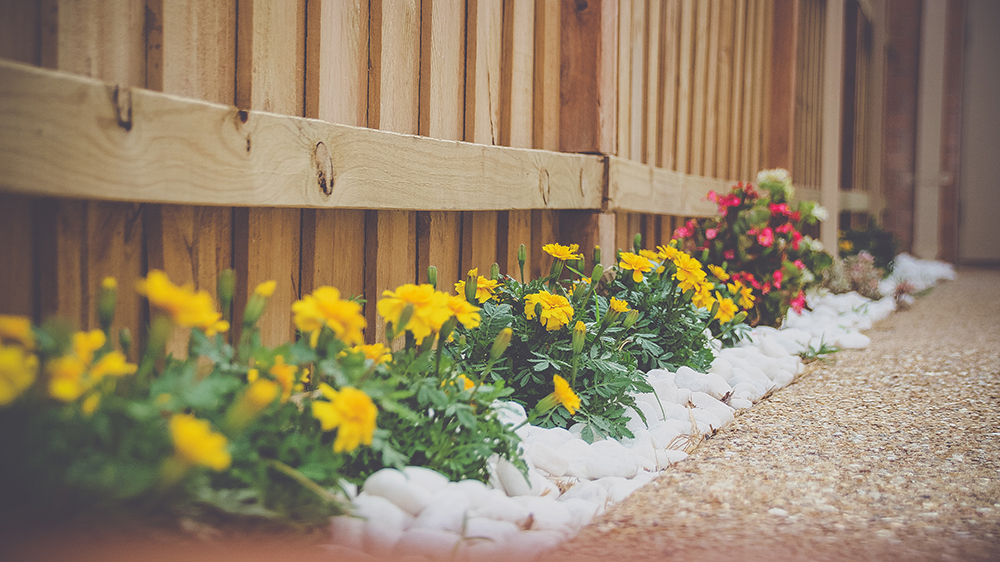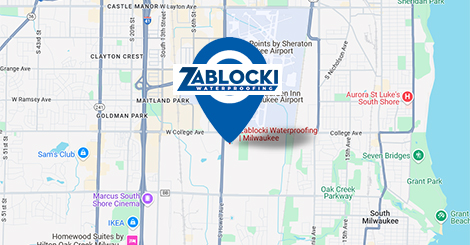When heavy rains meet inadequate sloping of a yard, the result is likely to be residential flooding. Flooding can damage the soil around your home as well as the home’s foundation, depending on the proximity of the pooling water to your basement walls.
Thankfully, there are a variety of methods for controlling the flow of stormwater away from your home. Many of these methods even allow the homeowner to improve the curb appeal of their property by using various plants and shrubs to aid in the absorption of excess water. If your yard is prone to flooding or pooling of stormwater after heavy rains, here are some creative and eco-friendly ways to manage landscape drainage for stormwater.
Create a drainage swale
A drainage swale is an effective method of stormwater management that can make your yard look like a pristine prairie meadow. To create a swale, you start by digging to form a gentle slope away from your foundation that excess stormwater can follow. A trench with gently sloping edges guides the water away from your foundation and basement walls.
Along the walls of the trench, you can plant a variety of different plants and shrubs. These plants greatly help soak up excess stormwater through their root systems. When filling the trench, make sure to use a fast-draining soil. A slow-draining soil such as clay will not allow stormwater to adequately soak into the soil, and you’ll end up just transferring excess water from one pooled location to another.
For maximum water flow control, a perforated PVC pipe can be laid in the trench before it is covered with fast-draining soil. This pipe will help further drain excess water to the end of the drainage swale, where plants will soak up this excess.
Build a rain garden
A rain garden is essentially a patch of soil in your yard that allows plants to grow because stormwater runoff provides the necessary hydration. Rain gardens can be standalone entities or the ending destination for a drainage swale.
If a rain garden is used as a standalone water management system, it is important to accurately determine where to place it in your yard. Although the initial presumption may be to build it where water is currently pooling, that may actually oversaturate the garden and prevent plants from growing. By building your rain garden a bit upstream and using fast-draining soil, your rain garden can dramatically slow the excess water flowing to the bottom of your yard’s slope.
The nice thing about a rain garden is that it is customizable. Start small, determine how it is controlling excess stormwater, and adjust as needed!
Lay pervious paving
Pervious concrete is a type of concrete that is highly porous, allowing water to drain through to a gravel layer underneath. If your residence has a large driveway, ground-level patio, or another similar structure, pervious paving blocks may be a great solution to control excess stormwater.
Pervious paving is great for gently sloping areas. Although this can be a DIY project, for areas such as driveways where heavy loads will routinely press on the pavers, a licensed professional should be used.
Homeowners may not realize that the key to effective basement waterproofing actually begins in their yard. As water pools and seeps into the soil around your basement and foundation, the force of gravity exerts what is known as hydrostatic pressure on the walls of your basement. This pushes water through, causing a myriad of moisture and mold concerns. By effectively managing stormwater runoff, you can keep your basement dry and your yard looking great at the same time!
At Zablocki Waterproofing, we use creative solutions and time-tested strategies to help homeowners in the greater Milwaukee region keep their basements dry. We provide people like you with expert waterproofing and basement repair services at a great value with unbeatable expertise. If you’ve noticed moisture in your basement, don’t wait – give Zablocki a call today.





